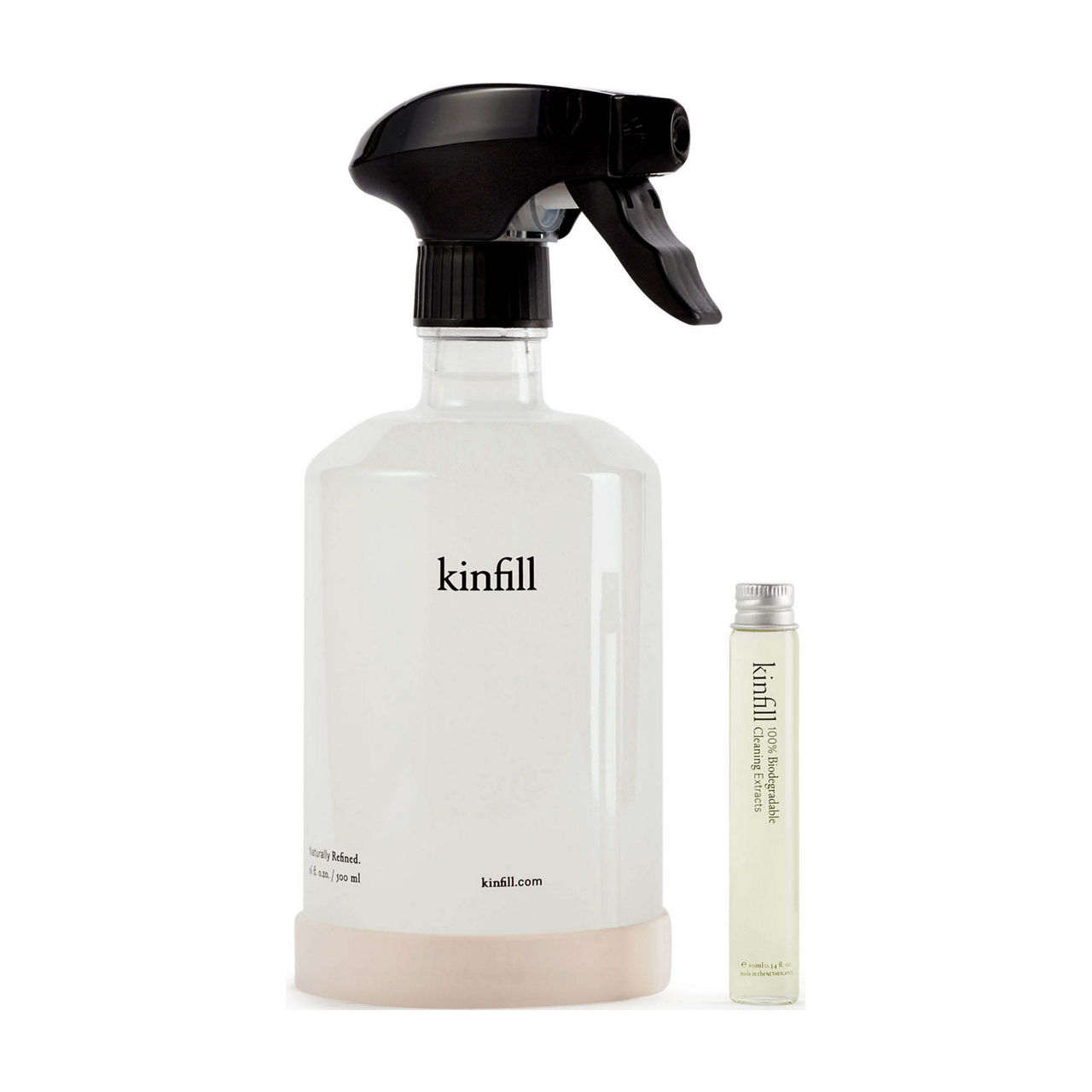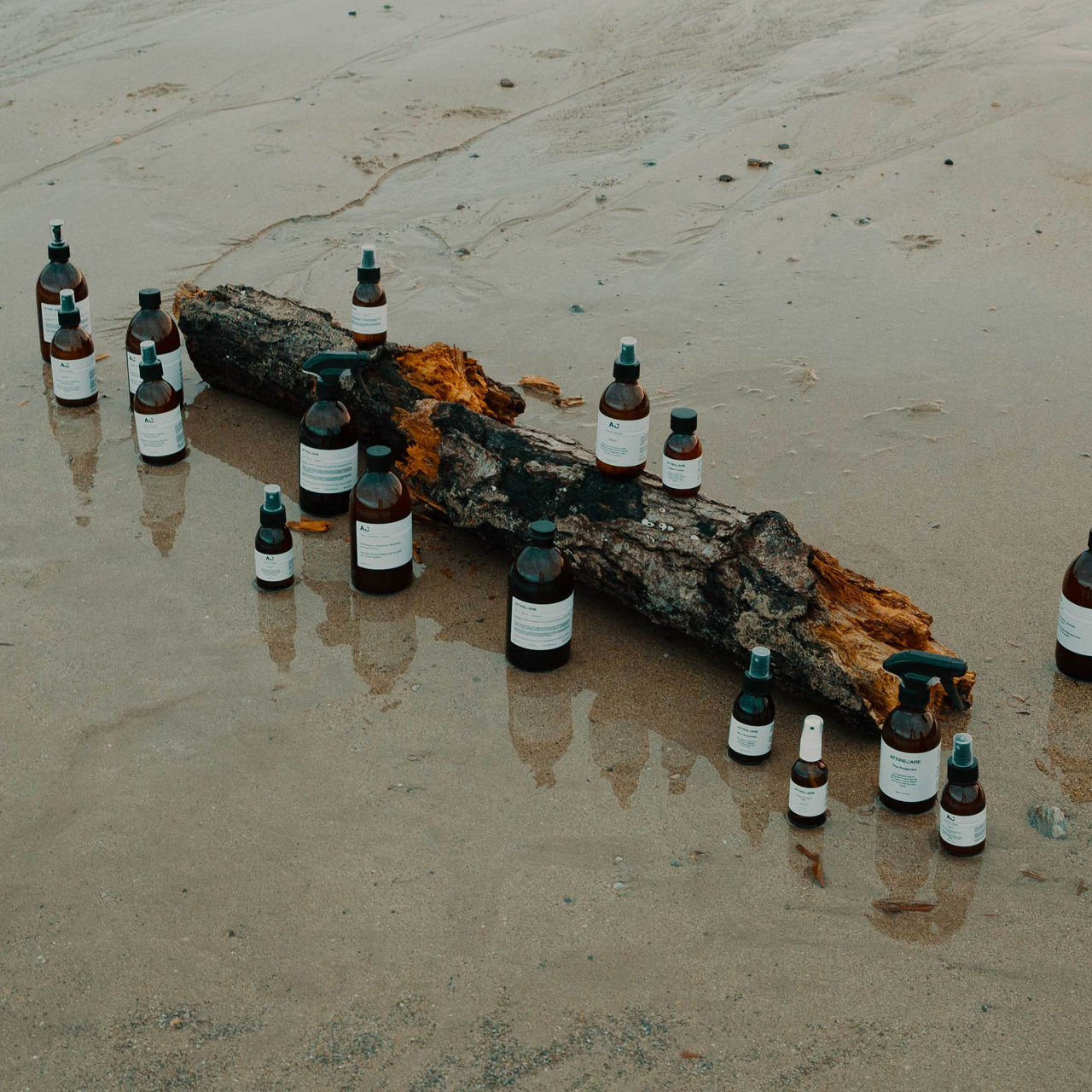Your Shopping Bag is Empty
Living
SPRING CLEANING - BUT MAKE IT SUSTAINABLE
Longer days and new blooms can only mean one thing: it’s time to start the spring clean. This year, elevate your routine and embrace green cleaning: the sustainable way to clean your home.
Spring is here, and with it comes more sunlight, blooming florals shooting up from the ground…and a pretty noticeable layer of dust, dirt and grime in the corners of our homes. Yes, in addition to it being time to begin dining al fresco, enjoying long sunshine-filled walks and bringing home fresh bunches of daffodils, it’s also time for spring cleaning.
But before you start, take a moment to consider how ‘clean’ your cleaning products actually are. Conventionally, they’re loaded with chemicals that can remove the toughest of stains, sure, but also pollute the air you breathe and end up in our waterways. For example, triclosan and phthalates are two common ingredients found in cleaning supplies that can harm aquatic life after they go down your drain. Adding to the environmental damage, cleaning products are notorious for single-use items and plastic packaging.
But fortunately, there are plenty of simple changes you can make to your cleaning routine that will not only leave your home sparkling, but it will also be less harmful to our planet. And because spring cleaning is a daunting task all on its own, we’ve asked the Brown Thomas sustainability team to share their top tips and tricks on how to clean - the more sustainable way. Plus, they also share the best products from our sustainable edit to help get the job done in a flash.
CUT DOWN ON WASTE
“As a general rule of thumb, single-use items should be avoided as much as possible in daily life - your cleaning routine included. Wipes and disposable sponges are an issue for two reasons:
- The material resources, energy, human labour and transport miles that go into manufacturing, packaging and distributing a product in the first place are vast. So, when an item is then only used once, essentially all of that resource goes immediately to waste.
- They are often not recyclable, so they will be destined for incineration or landfill once used, causing pollution and greenhouse gas emissions.
Cut down on (or ideally cut out) single-use items when you’re cleaning. Ditch the wipes and look for biodegradable or natural-based re-useable cloths instead. The reusability element is important but so is choosing natural biodegradable options. This means they naturally break down once they are worn.
DITCH THE PLASTIC
“While single-use products are of particular concern, the amount of plastic involved in a cleaning routine also stacks up. With a myriad of products to cover cleaning all types of surfaces and rooms, we end up with cabinets full of plastic which we constantly need to re-purchase. That’s why we love Kinfill for revolutionising the cleaning process. Kinfill is all about reusable, refillable spray bottles, made from glass, and cleaning solution which comes as a concentrate that you add water to. Once it runs out, the only thing you need to repurchase is the cleaning concentrate, as you simply refill your bottles. This eliminates the use of plastic in your routine and is a real zero waste solution!”
CONSIDER CANDLES
“Candles and diffusers are a great way to keep rooms smelling fresh without having to reach for nasty aerosols. We love the brand Skandinavisk for their beautiful scents, but also their impressive sustainability credentials. Skandinavisk is a certified B Corporation, meaning they are certified as meeting the highest standards of verified social and environmental performance, public transparency, and legal accountability to balance profit and purpose. Their candles contain 100% cotton wicks, responsibly sourced rapeseed wax and contain natural essential oils for fragrance. In addition, the candle glass is made with up to 30% recycled materials.”
LAUNDER LESS
“First things first – wash less! Try to avoid falling into a habit of washing clothes after each wear. Airing instead of washing, and spot cleaning stains are super effective and much better for your carbon footprint.
Some of the most energy intensive appliances in our house are our washing machines and dryers. The energy required to heat the water for a wash cycle is substantial, certain studies have shown that it accounts for 60% of the energy used during the wash. So while we’ve heard it time and time again, it really makes all the difference to wash at a lower temperature. In addition to this, as much as possible avoid the dryer and opt for a clothes horse or indeed washing line when the sun is shining. The great thing about using these tips is that it’s not just better environmentally, less washing and heated drying protects the clothing and helps extend their life-cycle.
Another issue with washing is the shedding of microfibres through the process. These microfibres drain from our machines into our waterways and eventually end up as pollution in our rivers and oceans. Experts advise that washing with a full load reduces shedding, and there are also products that can help to “catch” the microfibers during the wash which are worth checking out.
One way to avoid the aforementioned impacts of washing is to treat clothing with protectants and freshers. This helps to prolong the time needed between washes.
RE-HAUL YOUR CLEANING SUPPLIES:

KINFILL Glass & Mirror Cleaner Kit Lavender
Now €7.50
Was €25.00

KINFILL Tub & Tile Cleaner Kit Cucumis
Now €7.50
Was €25.00

SKANDINAVISK Hygge Scent Diffuser 200ml
€49.00

SKANDINAVISK Lempi Scented Candle 200g
€39.00

SKANDINAVISK Hygge Scent Diffuser Refill 200ml
€33.00

ATTIRECARE Shoe Cleaning Set
Now €7.50
Was €25.00

ATTIRECARE Garment Protector
Now €6.90
Was €23.00

ATTIRECARE Explore Set
Now €6.90
Was €23.00
MORE TO READ
Now with your home successfully tidied, it’s time to hit the refresh button on the bedroom. Discover the top bedroom trends for 2022 in Dream a Little Dream.